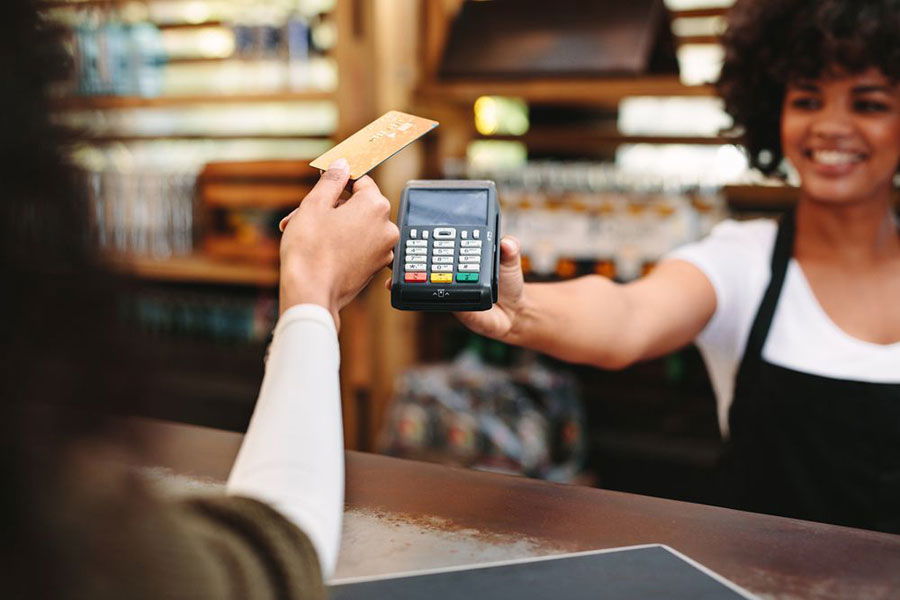As the world becomes more cashless, many young people are beginning to use debit cards to manage their finances. But how old do you have to be to get a debit card? This article explores the age requirements, benefits, and best options for minors.
Age requirements for debit cards vary, but there are several options available for minors, often with parental consent.

Key Takeaways
- Age requirements for debit cards vary, but options are available for minors with parental consent.
- Debit cards help young people develop financial literacy and manage money safely.
- Parents should compare different debit card options and teach responsible usage.
Age Requirements
The typical age for obtaining a debit card varies by country and financial institution. In many cases, the minimum age is 13 with parental consent, but some banks offer options for younger children, often linked to a parent’s account.
Parental consent plays a significant role in minors obtaining debit cards. For children under 18, most banks require a parent or guardian to open a joint account or authorize the debit card. This allows parents to monitor and manage their child’s spending.
Benefits of Having a Debit Card at a Young Age
Having a debit card at a young age provides numerous benefits that can positively influence a child’s financial habits and skills. Here are some key advantages:
Financial Literacy
A debit card helps young people learn money management skills early. They can practice budgeting, saving, and understanding the value of money. This hands-on experience is crucial for developing financial literacy. By managing their own money, children learn to:
- Track spending: Keeping track of their purchases helps kids understand where their money goes and encourages mindful spending.
- Budget effectively: With a debit card, young users can set budgets for different categories like food, entertainment, and savings, learning to live within their means.
- Save regularly: Many debit cards designed for minors come with built-in savings tools, enabling kids to set aside a portion of their money regularly.
Independence and Responsibility
Having a debit card fosters a sense of independence and responsibility. Young people learn to make decisions about their spending and saving without relying entirely on cash from their parents. This early exposure to financial decision-making can prepare them for larger financial responsibilities in the future.
Safety and Convenience
Debit cards reduce the need to carry cash, making transactions safer and more convenient. Here are some specific safety and convenience benefits:
- Security features: Many cards come with security features like chip technology and the ability to lock the card if it’s lost or stolen. This reduces the risk of theft and fraud.
- Parental controls: Debit cards for minors often include parental controls, allowing parents to set spending limits, monitor transactions, and receive alerts for unusual activity. This oversight ensures that children use their cards responsibly.
- Ease of use: Using a debit card is often easier and more convenient than handling cash. Children can make purchases online or in-store, which is particularly useful in a digital age where cashless transactions are becoming the norm.
Educational Tools and Resources
Many debit cards designed for minors come with educational tools and resources to enhance financial learning:
- Interactive apps: Some debit card providers offer apps that include interactive financial education games and lessons. These tools make learning about money fun and engaging.
- Chore and allowance management: Features like chore tracking and allowance management teach kids the value of earning money and managing their income. Parents can assign chores and set payments directly through the app.
- Goal setting: Kids can set savings goals within their account, helping them learn to plan for future purchases and prioritize their spending.
Real-World Experience
Using a debit card provides real-world experience in managing finances. Children learn to:
- Handle transactions: They become familiar with making transactions, both online and in person, and understand the process of using a debit card.
- Read statements: Reviewing monthly statements or app notifications helps them understand the importance of monitoring their spending and managing their account balance.
- Understand bank fees: Exposure to potential bank fees (e.g., ATM fees, overdraft fees) teaches kids the importance of reading terms and conditions and avoiding unnecessary charges.
Building Financial Confidence
Early exposure to financial tools like debit cards builds financial confidence. Children who are comfortable managing their own money are more likely to become financially responsible adults. They gain confidence in their ability to make informed financial decisions and handle their finances independently.
Best Debit Card Options for Minors
There are several options available for minors who want to use debit cards, including bank-issued debit cards, prepaid debit cards, and fintech solutions. Each option offers different features and benefits, so it’s important to choose the one that best fits your needs and preferences.
Bank-Issued Debit Cards
Many major banks offer debit cards specifically designed for minors. These cards often come with features such as no monthly fees, parental controls, and financial education resources. Here are some examples:
- Chase First Banking: Designed for children aged 6-17, this card comes with no monthly fees, robust parental controls, and the ability to set spending limits and monitor transactions through the Chase mobile app.
- Wells Fargo Clear Access Banking: This card is available for teens aged 13-17 and offers features like no overdraft fees, spending limits, and account monitoring. It’s linked to a parent’s account, allowing for easy oversight.
Prepaid Debit Cards
Prepaid debit cards are another option for minors. These cards are preloaded with a set amount of money and can be used like a regular debit card. They are ideal for teaching budgeting, as spending is limited to the loaded amount. However, they may come with fees for reloading or inactivity. Some popular options include:
- Greenlight: Greenlight is tailored for kids and teens, offering features such as customizable spending controls, real-time notifications, and the ability to set savings goals. Greenlight also includes educational tools to help kids learn about money management.
- FamZoo: Designed as a family finance app, FamZoo offers prepaid cards that can be managed by parents. It includes features like chore tracking, automated allowances, and financial education resources. Parents can set up multiple cards for each child and monitor their spending.
- Acorns Early: A custodial investment account designed for children, Acorns Early helps parents invest in their child’s future. It includes educational tools, automated investment options, and the ability to grow savings over time. Parents can monitor contributions and track growth, providing a hands-on way to teach kids about financial responsibility and long-term planning.
Fintech Solutions
Fintech companies have developed innovative solutions to cater to the financial needs of young users. These options often include advanced features and educational tools to enhance financial literacy. Some notable fintech solutions are:
- Current: Current’s teen banking account comes with a debit card and features like spending insights, instant money transfers, and parental controls. It’s designed to help teens manage their money while giving parents oversight capabilities.
- Step: Step offers a secured spending card designed for teens, which works like a debit card but helps build credit history. It includes parental oversight features, instant transfers, and no fees. Step also provides financial education resources.
- Copper: Copper provides a debit card and app focused on financial education for teens. It offers features like automatic savings, financial quizzes, and spending insights. Parents can monitor their child’s account activity and set spending limits.
Comparing Options
When choosing the best debit card for minors, it’s essential to consider various factors such as fees, parental controls, educational features, and the overall ease of use. Here’s a quick comparison to help you decide:
- Fees: Look for cards with minimal fees, including no monthly maintenance fees, low reloading fees, and no inactivity fees.
- Parental controls: Choose a card that offers robust parental controls, allowing you to set spending limits, monitor transactions, and receive alerts.
- Educational features: Opt for cards that provide financial education tools, such as savings goals, spending insights, and interactive learning modules.
- Convenience: Ensure the card is easy to use, with features like mobile apps for managing accounts and real-time notifications.
Practical Tips for Parents and Minors
When selecting a debit card, consider factors such as fees, parental controls, and educational features. Compare different options to find the best fit for your child’s needs and your family’s financial goals.
To set up a debit card for a minor, follow the bank’s or fintech provider’s instructions, which usually involve linking the card to a parent’s account. Teach your child how to use the card responsibly, including tracking their spending and understanding fees.
Conclusion
Age requirements for debit cards vary, but options are available for minors with parental consent. Having a debit card at a young age offers benefits like financial literacy and convenience.
Starting financial education early is crucial. Debit cards can help young people develop responsible financial habits and prepare them for future financial independence.
Explore debit card options for your children and consider implementing one that fits your family’s needs. Share your experiences and tips in the comments to help other parents make informed decisions.
Frequently Asked Questions
What is the minimum age to get a debit card without parental consent?
The minimum age to get a debit card without parental consent is typically 18. Some banks and fintech companies may offer debit cards to minors without parental consent, but these are exceptions and usually come with certain restrictions.
Can minors get a debit card without a bank account?
Most debit cards for minors are linked to a parent or guardian’s bank account. However, prepaid debit cards and some fintech solutions do not require a traditional bank account and can be managed separately.
Are there any fees associated with debit cards for minors?
Yes, there can be fees associated with debit cards for minors, such as monthly maintenance fees, ATM fees, and reloading fees. It’s important to review the terms and conditions of the card to understand any potential costs.
How can parents monitor their child’s debit card usage?
Parents can monitor their child’s debit card usage through online banking tools or mobile apps provided by the bank or fintech company. These tools allow parents to view transactions, set spending limits, and receive alerts for unusual activity.
What are the best practices for teaching kids to use debit cards responsibly?
Teaching kids to use debit cards responsibly involves setting clear spending limits, encouraging them to track their expenses, and discussing the importance of saving. Parents should also educate their children about avoiding overdrafts and understanding fees.



